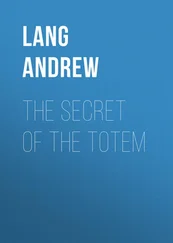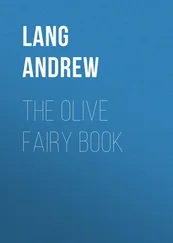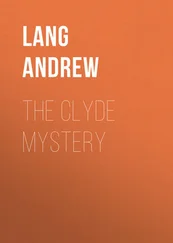Andrew Lang - The Mystery of Mary Stuart
Здесь есть возможность читать онлайн «Andrew Lang - The Mystery of Mary Stuart» — ознакомительный отрывок электронной книги совершенно бесплатно, а после прочтения отрывка купить полную версию. В некоторых случаях можно слушать аудио, скачать через торрент в формате fb2 и присутствует краткое содержание. Жанр: foreign_antique, foreign_prose, на английском языке. Описание произведения, (предисловие) а так же отзывы посетителей доступны на портале библиотеки ЛибКат.
- Название:The Mystery of Mary Stuart
- Автор:
- Жанр:
- Год:неизвестен
- ISBN:нет данных
- Рейтинг книги:4 / 5. Голосов: 1
-
Избранное:Добавить в избранное
- Отзывы:
-
Ваша оценка:
- 80
- 1
- 2
- 3
- 4
- 5
The Mystery of Mary Stuart: краткое содержание, описание и аннотация
Предлагаем к чтению аннотацию, описание, краткое содержание или предисловие (зависит от того, что написал сам автор книги «The Mystery of Mary Stuart»). Если вы не нашли необходимую информацию о книге — напишите в комментариях, мы постараемся отыскать её.
The Mystery of Mary Stuart — читать онлайн ознакомительный отрывок
Ниже представлен текст книги, разбитый по страницам. Система сохранения места последней прочитанной страницы, позволяет с удобством читать онлайн бесплатно книгу «The Mystery of Mary Stuart», без необходимости каждый раз заново искать на чём Вы остановились. Поставьте закладку, и сможете в любой момент перейти на страницу, на которой закончили чтение.
Интервал:
Закладка:
On this important point of Mary’s guilt with Riccio, we have no affirmative evidence, save Darnley’s word, when he was most anxious to destroy the Italian for political reasons. Randolph, who, as we have seen, had apparently turned his back on his old slanders, now accepted, or feigned to accept, Darnley’s anecdotes of his discoveries.
It is strange that Mary at the end of 1565, and the beginning of 1566, seems to have had no idea of the perils of her position. On January 31, 1566, she wrote ‘to the most holy lord, the Lord Pope Pius V.,’ saying: ‘Already some of our enemies are in exile, and some of them are in our hands, but their fury, and the great necessity in which they are placed, urge them on to attempt extreme measures.’ [43] Nau, p. 192.
But, ungallant as the criticism may seem, I fear that this was only a begging letter in excelsis , and that Mary wanted the papal ducats, without entertaining any great hope or intention of aiding the papal cause, or any real apprehension of ‘extreme measures’ on the side of her rebels. Her intention was to forfeit and ruin Moray and his allies, in the Parliament of the coming March. She also wished to do something ‘tending to’ the restoration of the Church, by reintroducing the spiritual lords. But that she actually joined the Catholic League, as she was certainly requested to do, seems most improbable. [44] The subject is discussed, with all the evidence, in Hay Fleming, pp. 379, 380, note 33.
Having arranged a marriage between Bothwell and Huntly’s sister, Lady Jane Gordon, she probably relied on the united strength of the two nobles in the North and the South. But this was a frail reed to lean upon. Mary’s position, though she does not seem to have realised it, was desperate. She had incurred the feud of the Lennox Stewarts, Lennox and Darnley, by her neglect of both, and by Darnley’s jealousy of Riccio. The chiefs of the Hamiltons, who could always be trusted to counterbalance the Lennox faction, were in exile. Moray was desperate. Lethington was secretly estranged. The Protestants were at once angry and terrified: ready for extremes. Finally, Morton was threatened with loss of the seals, and almost all the nobles loathed the power of the low-born foreign favourite, Riccio.
Even now the exact nature of the intrigues which culminated in Riccio’s murder are obscure. We cannot entirely trust the well-known ‘Relation’ which, after the murder, on April 2, Morton and Ruthven sent to Cecil. He was given leave to amend it, and it is, at best, a partisan report. Its object was to throw the blame on Darnley, who had deserted the conspirators, and betrayed them. According to Ruthven, it was on February 10 that Darnley sent to him George Douglas, a notorious assassin, akin both to Darnley and Morton. Darnley, it is averred, had proof of Mary’s guilt with Riccio, and desired to disgrace Mary by slaying Riccio in her presence. The negotiation, then, began with Darnley, on February 10. [45] Ruthven’s Narrative. Keith, iii. 260. There are various forms of this Narrative; one is in the Lennox MSS.
But on February 5 Randolph had written to Cecil that Mary ‘hath said openly that she will have mass free for all men that will hear it,’ and that Darnley, Lennox, and Atholl daily resort to it. ‘The Protestants are in great fear and doubt what shall become of them. The wisest so much dislike this state and government, that they design nothing more than the return of the Lords, either to be put into their own rooms, or once again to put all in hazard.’ [46] Goodall, i. 274.
‘The wisest’ is a phrase apt to mean Lethington. Now, on February 9, before Darnley’s motion to Ruthven, Lethington wrote to Cecil: ‘Mary! I see no certain way unless we chop at the very root; you know where it lieth.’ [47] Bain, ii. 255.
When Mary, later, was a prisoner in England, Knox, writing to Cecil, used this very phrase, ‘If ye strike not at the root, the branches that appear to be broken will bud again’ (Jan. 2, 1570). When Lethington meant to ‘chop at the very root,’ on February 9, 1566, he undoubtedly intended the death of Riccio, if not of Mary.
In four days (February 13) Randolph informed Leicester of Darnley’s jealousy, and adds, ‘I know that there are practices in hand, contrived between the father and son’ (Lennox and Darnley), ‘to come by the crown against her will.’ ‘The crown’ may only mean ‘the Crown Matrimonial,’ which would, apparently, give Darnley regal power for his lifetime. ‘I know that, if that take effect which is intended, David, with the consent of the King, shall have his throat cut within these ten days. Many things grievouser and worse than these are brought to my ears: yea, of things intended against her own person…’ [48] Printed in a scarce volume, Maitland’s Narrative , and in Tytler, iii. 215. 1864.
The conspiracy seems to have been political and theological in its beginnings. Mary was certainly making more open show of Catholicism: very possibly to impress the French envoys who had come to congratulate her on her marriage, and to strengthen her claim on the Pope for money. But Lennox and Darnley were also parading Catholic devoutness: they had no quarrel with Mary on this head. The Protestants, however, took alarm. Darnley was, perhaps, induced to believe in Mary’s misconduct with Riccio after ‘the wisest,’ and Lethington, had decided ‘to chop at the very root.’ Ruthven and Morton then won Darnley’s aid: he consented to secure Protestantism, and, by a formal band, to restore Moray and the exiles: who, in turn, recognised him as their sovereign. Randolph, banished by Mary for aiding her rebels, conspired with Bedford at Berwick, and sent copies to Cecil of the ‘bands’ between Darnley and the nobles (March 6). [49] Bain, ii. 259-261.
Darnley himself, said Randolph, was determined to be present at Riccio’s slaying. Moray was to arrive in Edinburgh immediately after the deed. Lethington, Argyll, Morton, Boyd, and Ruthven were privy to the murder, also Moray, Rothes, Kirkcaldy, in England, with Randolph and Bedford. It is probable that others besides Riccio were threatened. There is a ‘Band of Assurance for the Murder.’ [50] Goodall, i. 266-268.
Darnley says that he has enlisted ‘lords, barons, freeholders, gentlemen, merchants, and craftsmen to assist us in this enterprise, which cannot be finished without great hazard. And because it may chance that there be certain great personages present, who may make them to withstand our enterprise, wherethrough certain of them may be slain,’ Darnley guarantees his allies against the blood feud of the ‘great persons.’ These, doubtless, are Bothwell, Atholl, and Huntly. The deed ‘may chance to be done in presence of the Queen’s Majesty, or within her palace of Holyrood House.’ The band is dated March 1, in other texts, March 5. The indications point to a design of killing Mary’s nobles, while she, in her condition, might die of the shock. She was to be morally disgraced. So unscrupulous were Mary’s foes that Cecil told de Foix, the French Ambassador in London, how Riccio had been slain in Mary’s arms, reginam nefario stupro polluens . [51] Hosack, ii. 78, note 3.
Cecil well knew that this was a lie: and it is natural to disbelieve every statement of a convicted liar and traitor like Darnley.
Just before the explosion of the anti-Riccio conspiracy, Bothwell se rangea . Mary herself made a match for him (the contract is of February 9, 1566) with Lady Jane Gordon, a Catholic, a sister of Huntly, and a daughter of that Huntly who fell at Corrichie burn. The lady was only in her twentieth year. The parties being akin, a dispensation was necessary, and was granted by the Pope, and issued by the Archbishop of St. Andrews. [52] See Dr. Stewart, A Lost Chapter in the History of Mary Queen of Scots , pp. 93, 94.
The marriage took place in the Protestant Kirk of the Canongate, though the bride was a Catholic, and Mary gave the wedding dress (February 24). The honeymoon was interrupted, on March 9, by the murder of Riccio.
Интервал:
Закладка:
Похожие книги на «The Mystery of Mary Stuart»
Представляем Вашему вниманию похожие книги на «The Mystery of Mary Stuart» списком для выбора. Мы отобрали схожую по названию и смыслу литературу в надежде предоставить читателям больше вариантов отыскать новые, интересные, ещё непрочитанные произведения.
Обсуждение, отзывы о книге «The Mystery of Mary Stuart» и просто собственные мнения читателей. Оставьте ваши комментарии, напишите, что Вы думаете о произведении, его смысле или главных героях. Укажите что конкретно понравилось, а что нет, и почему Вы так считаете.












